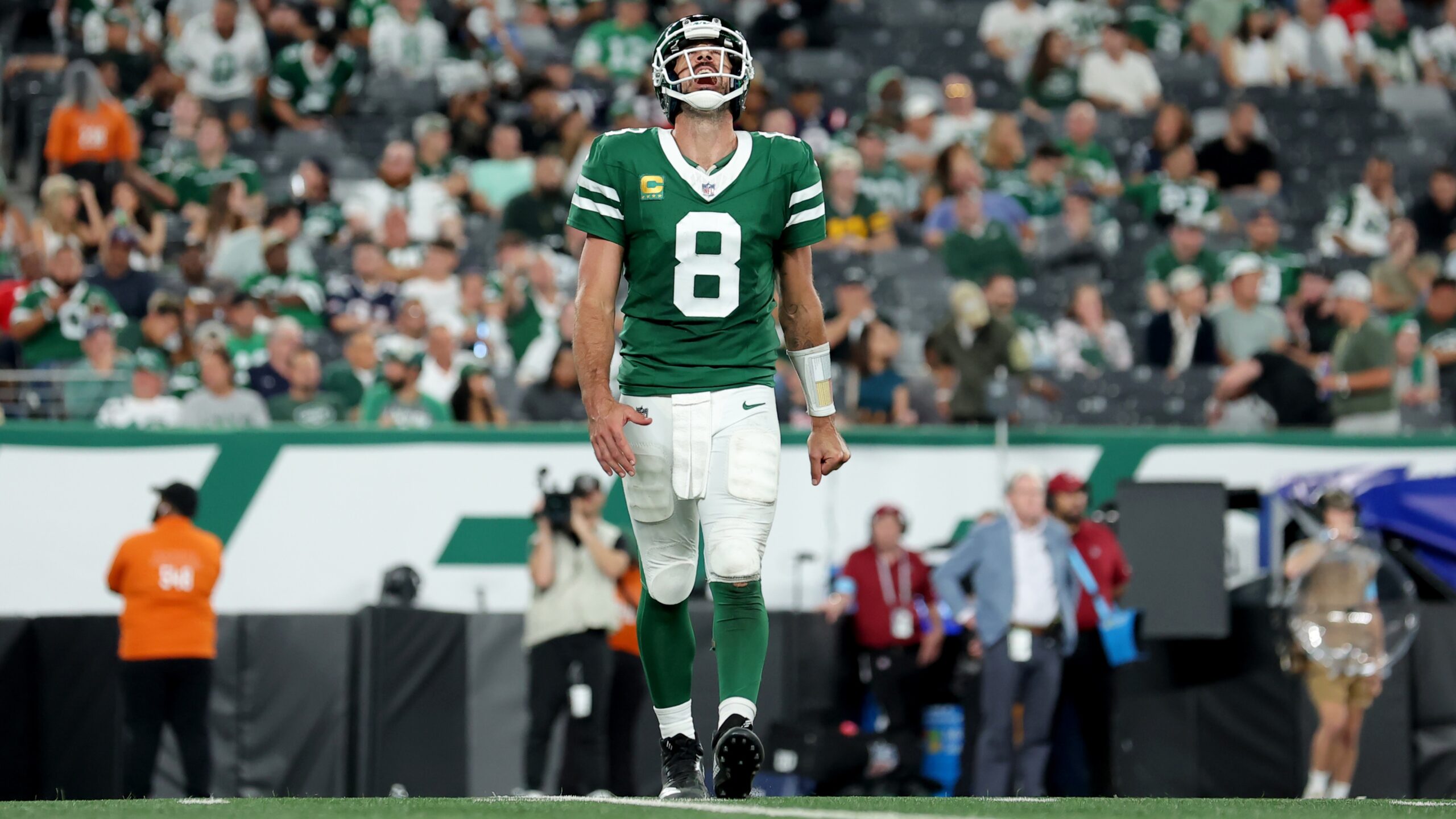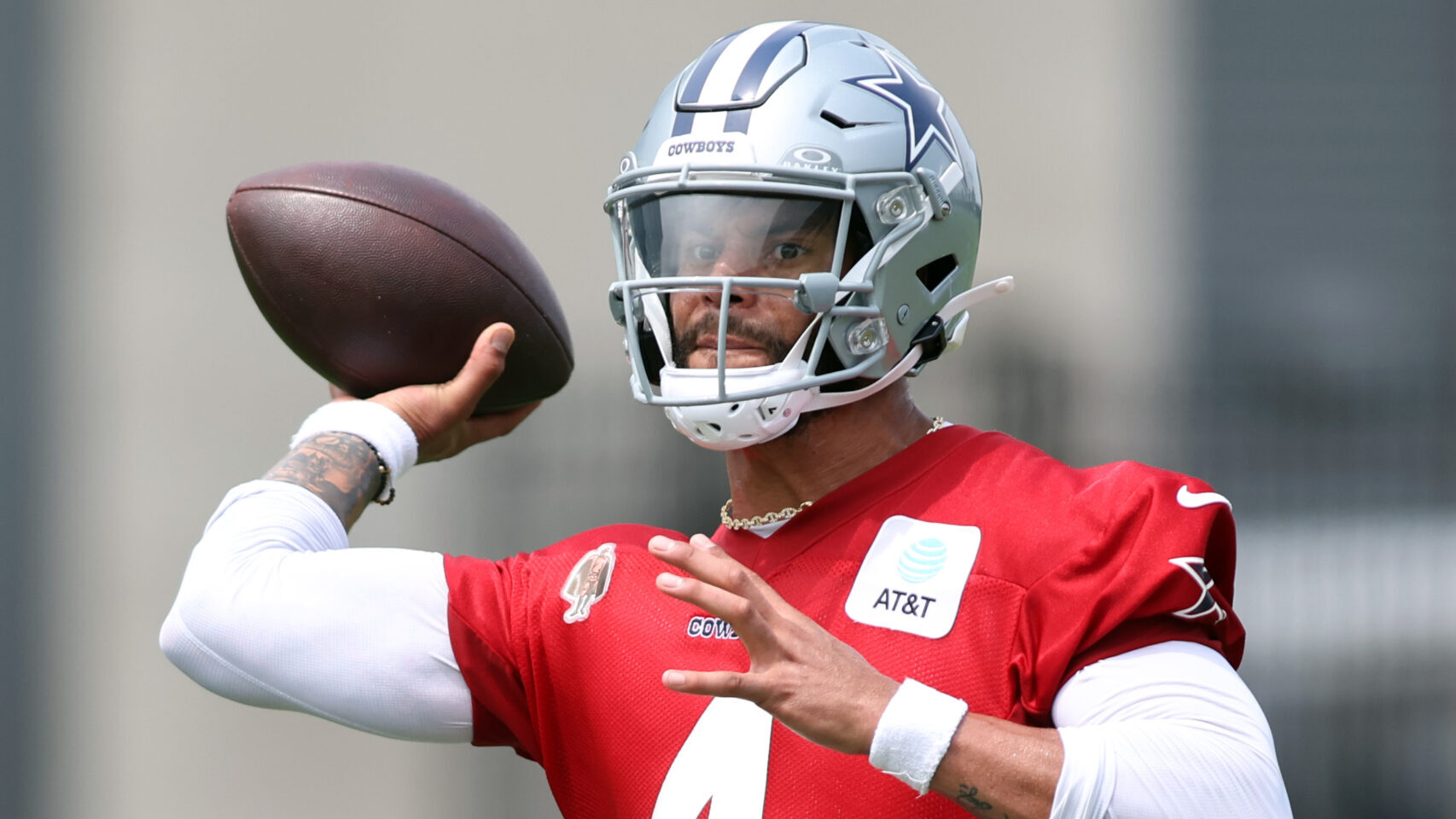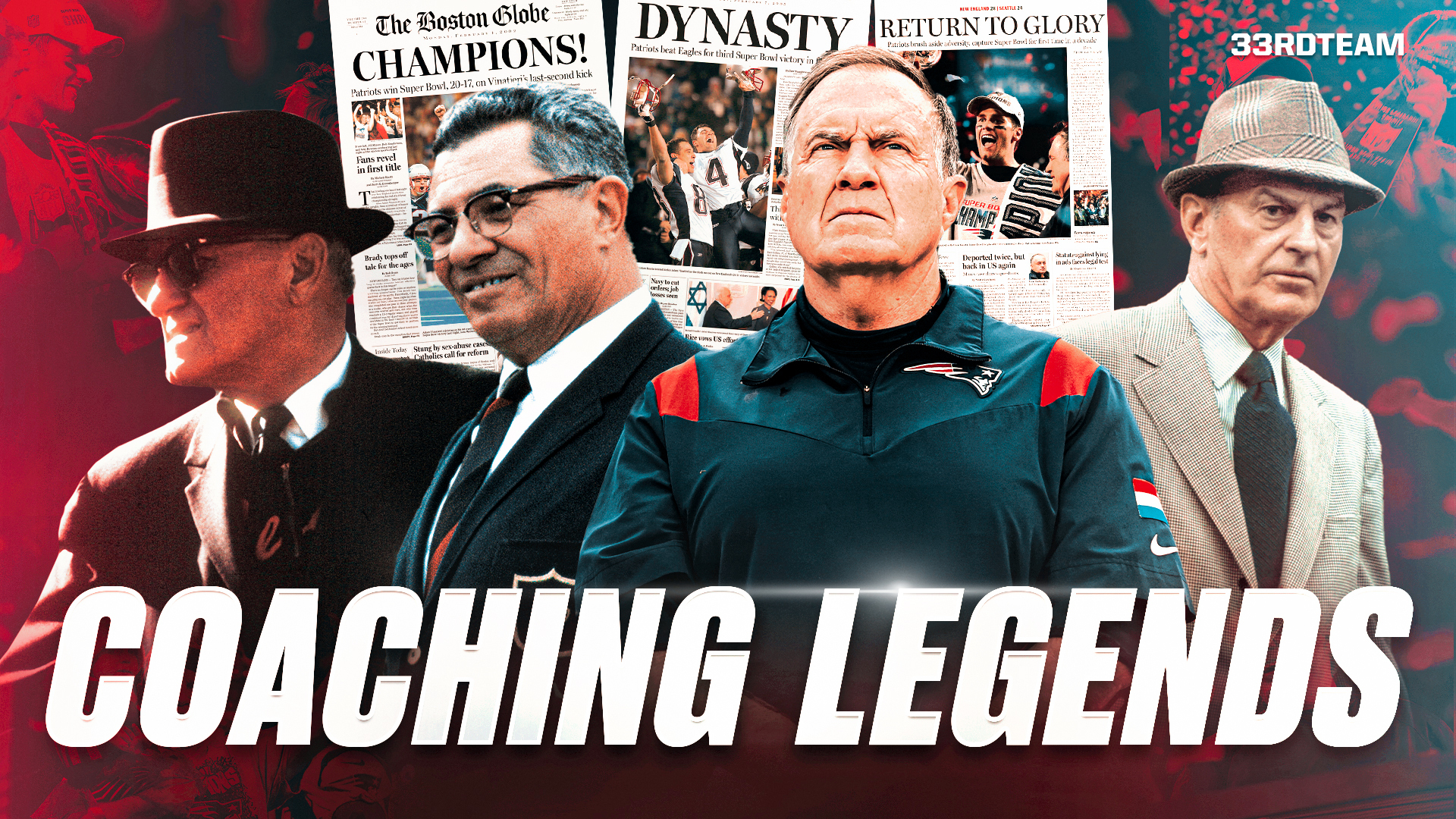Analysis
10/21/23
9 min read
How To Handle Week 7 Chalk in DFS

It's common for DFS players to key in on the same expected top plays each week, or 'chalk plays' if you will. Each week, we'll look at the expected chalk plays with tips and best practices to improve your roster construction.
We’ll also explore theoretical and conceptual areas of roster construction in DFS as we examine various pieces of chalk throughout the season so we can grow as players along the way. Numerous tips, or best practices, will emerge from this exploration.
With that, and in our best Bruce Buffer voice, it’s time!
Week 7 Chalk
 Kenneth Walker, Seattle Seahawks
Kenneth Walker, Seattle Seahawks
As you’ll quickly see, Kenneth Walker is yet another chalk back on this slate who is either a yardage-and-touchdown back or who has some other serious contributor to fragility. The role and matchup are pristine: 26 red zone opportunities (including seven goal line carries); a 70.1 percent opportunity share; a backup (Zach Charbonnet) who appears on the worse side of questionable after not practicing all week; and the opposing Arizona Cardinals surrendering 1.50 yards before contact per carry.
But that doesn’t change the fact that Walker doesn’t carry enough pass volume to offset the need for 100 yards on the ground and multiple scores to reach a GPP-worthy ceiling. That is very much within his range of outcomes here, all things considered, but there is always merit to thinking twice about a yardage-and-touchdown back with a 4.2 yards per carry mark and a 20.5 percent stuffed run rate. (Walker is a “ones and zeros” runner capable of ripping off chunk gains but also struggling with consistent vision.)
 Josh Jacobs, Las Vegas Raiders
Josh Jacobs, Las Vegas Raiders
We’ll continue having the same discussion on Josh Jacobs every week, it seems. The volume and role are great. The pass game usage is great. The efficiency is borderline laughable at this point, boasting a robust 2.9 yards per carry (a laughable 63rd), 3.9 yards per touch (38th), a 1.9 percent breakaway run rate (yes, it gets that low) and a 25.2 percent stuffed run rate. For comparison, Najee Harris has a 25.4 percent stuffed run rate).
The Las Vegas Raiders’ matchup at the Chicago Bears has some serious recency bias associated with it because it yields the third-worst net yards before contact value on the slate (behind only the New England Patriots and Tampa Bay Buccaneers), yet the field seems to think the Bears are still atrocious against the run. The saving grace here is Jacobs has legitimate double-digit target upside in this spot, although even the chances of that happening take a hit with veteran QB Brian Hoyer expected to draw the start this week for Las Vegas.
 Isiah Pacheco, Kansas City Chiefs
Isiah Pacheco, Kansas City Chiefs
Isiah Pacheco has been held to 18 running back opportunities or less in four of six games, with the two outlier games coming against the New York Jets in his hometown (20 carries and three targets) and against the hapless Denver Broncos (16 carries and six targets). He has been held to four or fewer targets in four of six games with a season-high of six last week against the Broncos. That said, the matchup generates the highest net yards before contact, and Pacheco has increased his utilization in the red zone this season, seeing 22 red zone touches including four goal line carries through six games.
We must play running backs, and Pacheco is a running back… Kidding, y’all. Pacheco projects as one of the better point-per-dollar plays on the slate, so it’s not all doom and gloom, I simply want to highlight the fact that he is probably more fragile than his expected ownership would indicate.
 Cooper Kupp, Los Angeles Rams
Cooper Kupp, Los Angeles Rams
He’s Cooper Kupp. End of analysis.
 Keenan Allen, Los Angeles Chargers
Keenan Allen, Los Angeles Chargers
Volume? Good. Talent? Good. Matchup? Yikes City, population: Keenan Allen.
Allen has a locked-in, volume-induced floor in this spot due to expected game environment, projected volume and talent, but he is going to need to surpass 100 receiving yards and find the paint multiple times to pay off his lofty price tag. Also, how quick the field is to forget (or completely neglect?) Keenan’s splits with running back Austin Ekeler during the previous three seasons. Spoiler alert: They aren’t pretty. But Allen is the top wide receiver in the game with the highest game total, so we must play him… right? Right? Well, the price is wrong.
The funniest part is Allen is priced between two wide receivers who are in much better matchups with greater chances of seeing 15-plus targets: Stefon Diggs and Davante Adams (who have much higher touchdown equity).
 Jahmyr Gibbs, Detroit Lions
Jahmyr Gibbs, Detroit Lions
I get it, rookie Jahmyr Gibbs is likely to see his highest snap rate and opportunity share of his short career. That’s the good. The bad is a matchup that generates a net yards before contact of just 1.28 yards, which is about the same as the game between the New Orleans Saints and Jacksonville Jaguars yielded on Thursday Night Football. Gibbs also somewhat quietly has 10 stuffed runs on just 39 carries, good for (bad for?) a 25.6 percent stuffed run rate (30th in the league).
The Baltimore Ravens have held opposing backs to 4.0 yards per carry and have ceded just one rushing score through six games. Gibbs likely brings enough receiving usage to offset the need for multiple touchdowns in this spot, but he remains highly unlikely to surpass 100 yards on the ground, leaving behind a rather shaky ceiling.
 Luke Musgrave, Green Bay Packers
Luke Musgrave, Green Bay Packers
Luke Musgrave is a rookie tight end who has seen more than four targets just twice through six weeks, six weeks that were played without the Green Bay Packers’ top two options on the field together due to injury in any single week — and those players are now healthy. That checks out. The field is truly reaching for any semblance of value.
 Zay Flowers, Baltimore Ravens
Zay Flowers, Baltimore Ravens
Zay Flowers has double-digit looks in half of his games this season, all while the rookie wide receiver’s team averages the third fewest pass attempts per game through six weeks. Flowers leads Baltimore receivers in fantasy points per route run (0.45) and receiving grade (77.4) against zone coverage this season, a scheme the Lions are in an above-average 77.3 percent of the time. But a lot of that is due to his presence on the field at a rate much higher than anyone else on the team.
His moderate 22.8 percent targets per route run rate against zone coverage help tell the full story here. Flowers is highly likely to see eight to 10 targets in this spot, but I am slightly hesitant to extrapolate an elite cost-considered ceiling on his small sample size. Plus, the matchup is less than ideal, and the primary target earner against zone coverage in this offense remains TE Mark Andrews, who might be the most mispriced player on the entire slate (they are the same price at $5,700).
Fragile Chalk
The general feel of this slate leads to a lot of fragile chalk.
There are a few reasons for that, the primary of which are the lack of value pieces that bring solid median projections and the uncertainty that comes with games carrying low game totals. This directly contributes to chalk running backs consisting of Walker, Jacobs and Pacheco, among others. All three of those backs either carry modest expected workloads, are yardage-and-touchdown backs who lack elite pass game involvement or have been highly inefficient through the season’s first six weeks.
These are typically players we would be looking to play at reduced ownership and fade at high ownership on a standard slate. The problem is that this slate is far from standard, and people are looking for certainty in places that are less certain than the top-level analytics would indicate.
While we can’t simply avoid players who have a legitimate ceiling because they also come with shaky floors, we can take an underweight approach in search of other spots with similar profiles that also bring lower expected ownership.
Embracing the Variance
Jerome Ford, D’Onta Foreman, Rhamondre Stevenson and Aaron Jones, in no particular order, all bring comparable upside to the table at much lower expected ownership. Foreman and Ford have projected volume totals in the same range as Pacheco and Walker, while Stevenson and Jones carry similar pass game projections as Jacobs. All four running backs are expected to garner sub-five percent ownership, while Walker, Jacobs and Pacheco are expected to be on 20-35 percent of rosters in play this week. Similar profiles at lower ownership and lower salary is a setup that could return significant expected value on this slate.
There’s a similar discussion regarding the expected roster construction tendencies from the field, considering the general lack of viable value pieces on the slate.
In other words, the lack of value means we should expect the majority of rosters in play this weekend to include just one player above $8,000 in salary, with the lone glaring exception being the combination of Patrick Mahomes and Travis Kelce (which should be present on five to seven percent of rosters in play this weekend).
Yet Ekeler, Kupp, Diggs, Adams and, to a lesser extent Allen, Saquon Barkley and Amon-Ra St. Brown carry clear paths to the top overall scores on the slate. Two players on that list are highly unlikely to be on rosters together this weekend, making it an interesting leverage angle. That discussion comes with the caveat that we must be willing to embrace additional variance to make that happen — with upside wide receivers such as Darius Slayton, Jalin Hyatt, Marvin Mims, Jaxon Smith-Njigba, Curtis Samuel, Rondale Moore and Jameson Williams.
That will do it for our Week 7 exploration of chalk and some theoretical and conceptual takeaways. We’ll be running this series every week of the 2023 season, picking out new learning points with each week. I welcome all feedback with this new column, so please don’t hesitate to reach out to let me know things you like or things I could do better.
Follow The 33rd Team Podcast Network on Spotify and Apple Podcasts.







